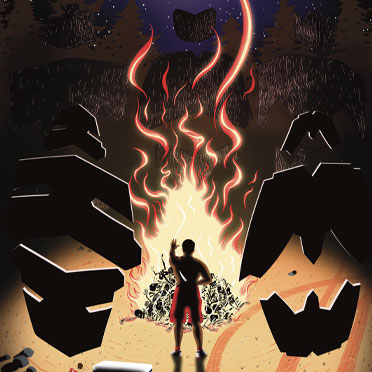Paint quality is meaningless if it does not express quality of feeling.
— Adolph Gottlieb
Adolph Gottlieb's painting Apaquogue contains two main areas that provide excellent examples of Action Painting and Color Field painting, the subcategories of Abstract Expressionism suggested by art historians. The lower areas of energetically painted, black brushstrokes are emblematic of Action Painting—the flowing, energized application of paint on the canvas that is associated with Jackson Pollock, Franz Kline, and Willem DeKooning. The bright, faded-edged circles in the top portion of the canvas are used in much the same way that color was used by Mark Rothko, Helen Frankenthaler, and Ad Reinhardt—as purely expressive elements, rather than representational tools. Gottlieb’s Apaquogue belongs to his Burst series (a reference to the circles), and calls to mind a landscape. The horizontal orientation, the brushy strokes at the bottom, and the circles above, which seem to reference suns, moons, or planets, all assert that the painting is about some sort of place. In fact, the title Apaquogue comes from the name of a road near the ocean close to the artist’s home. Yet, rather than telling the viewer what this place looks like, Gottlieb’s piece offers us some hints as to how he feels about this setting, and perhaps others. The black brushstrokes possess an energetic and flowing movement, possibly from the sea, the tall grasses near the water, or the reflections of light on whatever is at his feet. The colored circles, with their faded edges, seem to exist with a kind of radiating stillness, as if far away. It is through these few abstract elements that Gottlieb communicates the emotional impact a place can have on us.
